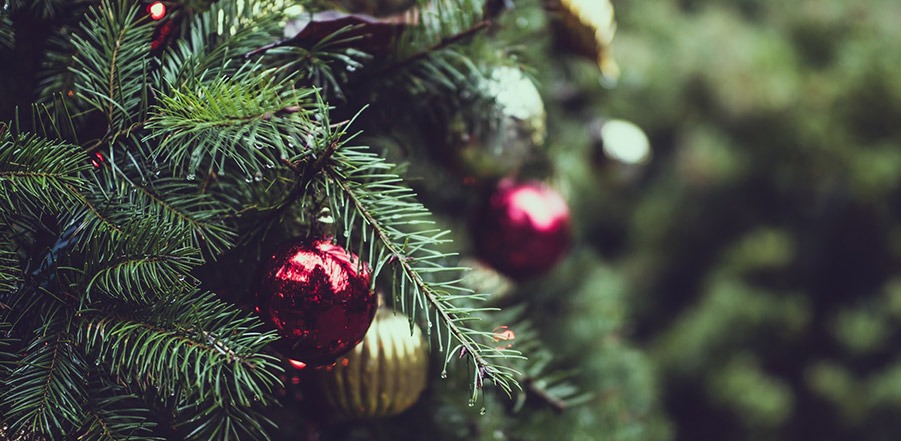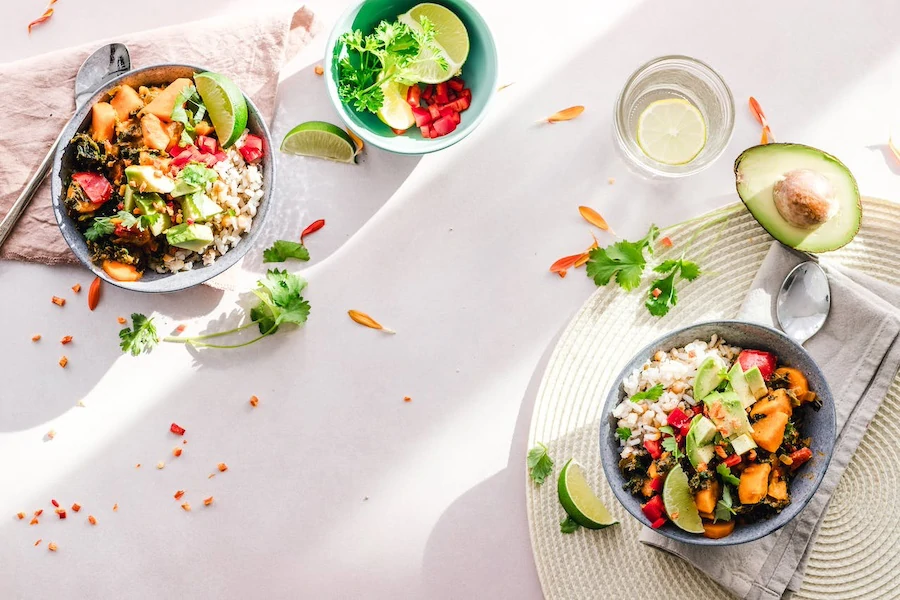
The holiday season is one of the most wonderful times of the year for friends and loved ones. Unfortunately, it can also be one of the biggest time periods of waste and consumption. There are many different you can make celebrating your Christmas holiday more eco-friendly without changing your traditions.
So, what are some tips for an eco-friendly Christmas?
Eco-Friendly Christmas Tips
1. Green Gift Wrapping
Did you know that most conventional wrapping paper contains foil, glitter, and even plastic? Although shiny wrapping paper may make your gifts look beautiful, these materials make your Christmas wrapping paper unrecyclable. An easy way to tell if your wrapping paper is recyclable is to do the crunch test. Simply squeeze a piece of your wrapping paper into a tight ball. If the paper stays scrunched up, then it’s recyclable, if it opens up, then it probably contains some unrecyclable materials.
In order to reduce your environmental impact, look for wrapping paper that is made from recycled paper and is fully recyclable. You can also wrap your gifts in a more traditional way, using brown paper, newspaper, or tissue paper. Avoid ribbons and bows as they contain plastic and unrecyclable materials, instead, a simple roll of twine will suffice. And of course, always save your unused wrapping paper for the next year!
2. Rethink Your Christmas Tree
According to Fresh Start Waste Management Company in the UK, more than six million real Christmas trees get thrown into landfills after the holidays have gone. I can’t imagine what that number looks like in even larger countries!
The good news is that it’s becoming more and more common that plant nurseries and home and garden centers offer a rental service for Christmas trees. They will even deliver and collect the tree to save you the hassle transporting it back and forth. When it’s brought back, it will be returned to the soil to grow again.
There’s no shame in using an artificial tree. It may not be the most environmentally-friendly choice as many are made from plastic and have a much higher environmental impact in their production. They are hassle-free and well-suited for smaller homes. But according to the non-profit company Carbon Trust, an artificial tree needs at least 10 years of use before it can offset the environmental impact of cutting down a real tree. So make sure you choose right and take good care of it year in and year out.
If you are still set on the traditional cut real Christmas tree for the holidays, look for dealers that sustainably grow their trees and have a certification from the FSC (Forest Stewardship Council).
Once the holiday has passed, participate in a local tree recycling program. Instead of being thrown out, the trees will be shredded and used as mulch or recycled as compost. This way you are not adding another tree that will sit in a landfill, waiting to decompose and contribute to greenhouse gases.
3. Eco-Friendly Christmas Lights
Did you know that according to NASA, parts of the planet earth are 50% brighter during the holidays? Not only does this consume energy but it also affects the ecosystems of nocturnal wildlife.
Make the switch to eco-friendly Christmas lights by choosing lights that are solar-powered or use energy-efficient LED bulbs. Not only will this lower your environmental impact, but they will last much longer than conventional lights. You’ll also save some cash on that electric bill too!
4. Rethink Your Christmas Decorations
Instead of going to the arts and crafts store and buying plastic decorations and tinsel, send the kids outside and go foraging for real ones found in nature. Simple pine cones, holly, ivy, and chestnuts can be found in many areas of the world. They add together to make great table decorations or centerpieces. You can also get the family and DIY – paper snowflakes, paper chains, and wreaths for the door to make lovely homemade holiday decorations.
5. Reduce Your Food Waste
Rethink your menu before you prepare for those big holiday dinners. How much food do you actually need and how much will go to waste. Do you need that whole giant turkey? Are all those Christmas cookies and pies necessary? Be honest with how much will get eaten and you can significantly reduce your food waste.
When you do have leftovers, instead of throwing out what doesn’t get eaten or sticking them in the back of the fridge, look to preserve your leftovers even longer by freezing them.
In the spirit of giving during the holiday season, you can also donate these leftovers to those in need. Contact your local food bank and check out their policies on accepting cooked leftovers or whether they just accept dried and canned food. Many homeless and housing shelters along with non-profits will accept food donations but find out their policies beforehand on what they can and cannot accept. Some restaurants even donate their leftover food at the end of the night. Contact a local restaurant to see if they can include your food along with their nightly donation.
6. Ditch the Plastic Plates and Cutlery
One of the biggest contributors to waste during the holiday season is using single-use paper or plastic plates, cups, cutlery, and napkins. Not only do cloth napkins, real cutlery, and dishes look much nicer but you will be cutting down significantly on your waste after the meal.
If you have a large number of guests and absolutely cannot supply real dishes and cutlery, choose their biodegradable or compostable counterparts made from plant-based materials such as bamboo.
7. Rethink Your Christmas Card
I absolutely love receiving Christmas cards from both family and friends. It’s a lovely way to connect before the new year and share the holiday spirit. Cut down your paper waste by opting for an e-card instead. Since your photos are probably digital they are much quicker and will also spare you the hassle of mailing them out. Your recipient can have the option of printing them out if they wish.
If you still prefer the old-fashioned way, look for cards that have the Forest Stewardship Council (FSC) seal, which means the paper was sustainably sourced. There are also brands that make their cards from 100% recycled materials and vegan vegetable-based ink.
8. Choose Eco-Friendly Gifts
When looking for the perfect gift to give, choose gifts that will last. There are many popular items that are eco-friendly. Simple and affordable Items such as reusable water bottles, reusable straws, bamboo toothbrushes, and eco-friendly soaps and shampoos are all made from eco-friendly materials and make perfect stocking stuffers. Stay away from gifts that contain excessive amounts of plastic or those that have a short lifespan and will only contribute as waste in the environment.
9. Reusable Advent Calendar
Instead of buying an advent calendar that gets thrown out once Christmas arrives, start a new tradition for your family and get a reusable advent calendar. Many are made from eco-friendly materials such as felt or wood and are very affordable. The Melissa and Doug Countdown to Christmas Advent Calendar (link to read reviews on Amazon) is a great way to get the little ones excited during the build-up to the big day.
10. Make a Charitable Donation
Last but most importantly, instead of doing the traditional gift exchange with your family, help out those in need during the holiday season. There are many charitable organizations such as Marine Toys for Tots, The Salvation Army, or the Make-A-Wish Foundation. These are more nationally recognized charities but many municipalities have smaller and more local charities you can work with.
Final Thoughts
You need not change your traditions too much to make an environmentally friendly change, sometimes it’s just as simple as rethinking how you’ve always done things and looking to improve them for the sake of the environment. These are just a few practical tips, but there are many more clever ways to reduce your waste during the holiday season. I wish you a very merry and eco-friendly Christmas!



